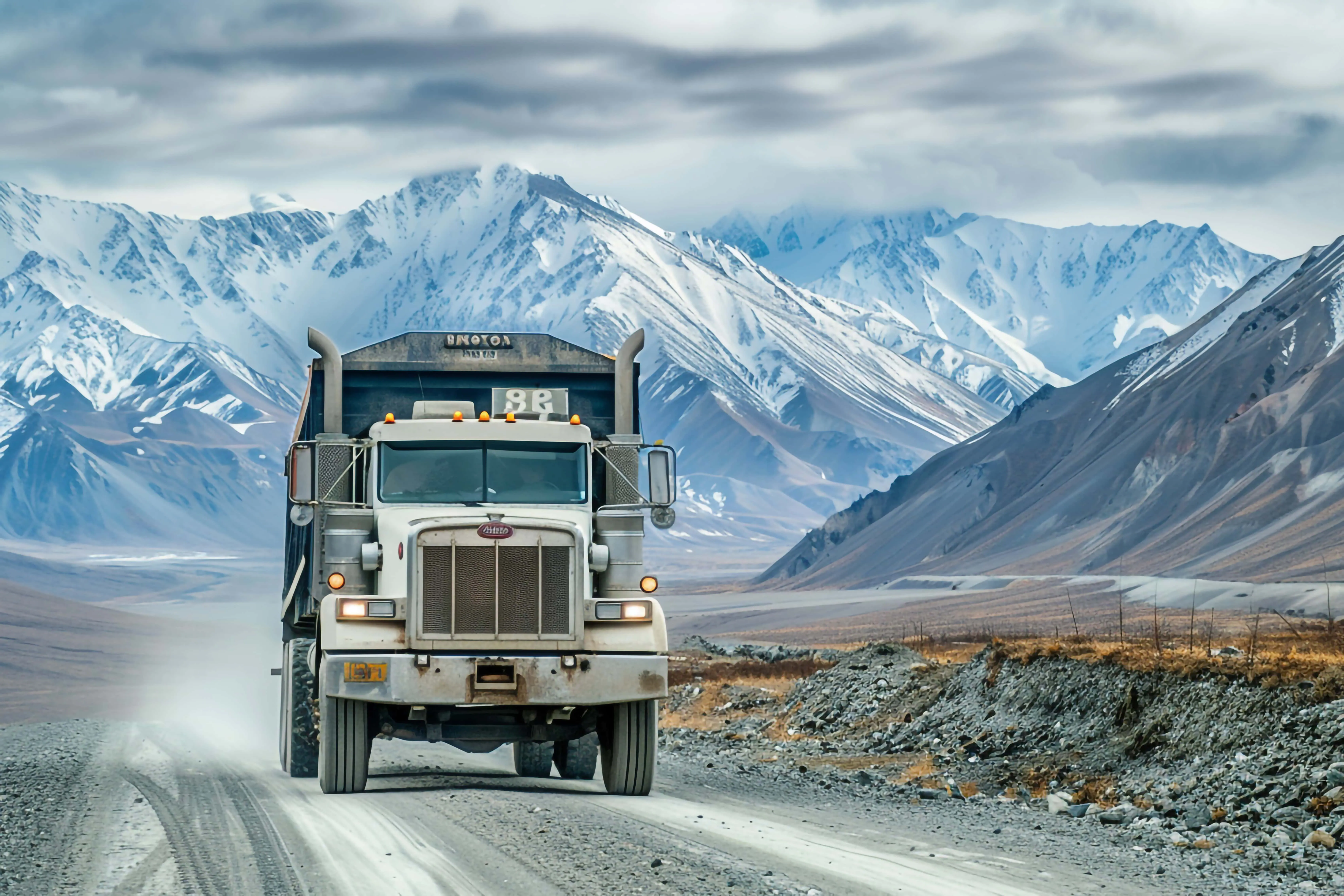Welcome to the dynamic world of CDL B jobs, where diverse opportunities await those eager to steer their career in a new direction. This guide is crafted to illuminate the path for entry-level job seekers considering a journey into the fields of transportation and commercial driving.
Navigating CDL B jobs requires understanding the roles, requirements, benefits, and challenges associated with this crucial driver’s license classification. Whether the independence on the road attracts you, the attractiveness of competitive salaries, or the prospect of job stability, this guide unfolds every significant aspect to help you make an informed decision.
Let’s shift gears and explore what holding a CDL B license means, the avenues it opens up, and how it can propel your career forward. Ready to explore? Buckle up, and let’s drive through this comprehensive exploration!
Understanding CDL B Jobs
CDL B jobs involve operating vehicles that require a Class B Commercial Driver’s License (CDL). Such jobs include many responsibilities depending on the specific position and industry. Typically, these roles are vital in sectors like transportation, delivery services, and construction. Knowing the scope and duties of CDL B jobs can guide you in determining if this path aligns with your career goals.
Types of CDL B Vehicles
Anyone with a CDL B can drive vehicles such as:
- Straight trucks
- Large passenger buses
- Segmented buses
- Box trucks
- Dump trucks with small trailers
The diversity of vehicles ensures CDL B drivers can find work in various settings.
Key Responsibilities
A CDL B driver may be responsible for:
- Safe operation of vehicles
- Load management and securing cargo
- Vehicle maintenance checks before and after trips
- Recording work hours and complying with transport laws
- Customer service and timely deliveries
Ensuring safety and efficiency is paramount in these roles.
Where CDL B Jobs Are Common
Main sectors that frequently require CDL B holders include:
- Local delivery services
- Waste management
- Construction companies
- School districts and public transportation
These roles are integral to keeping daily operations smooth and efficient in numerous industries.
The detailed guide on the Federal Motor Carrier Safety Administration’s website, which is viewable here, provides further understanding of licensing. For a broader educational context, explore resources such as the U.S. Department of Education’s guidelines on vocational training for CDL certifications.
Knowing more about what CDL B jobs entail helps set clear expectations for anyone considering this career route. Next, we’ll delve into the requirements needed to secure these positions.
Requirements for CDL B Jobs
To qualify for CDL B jobs, one must meet several specific requirements. These involve obtaining the right license and fulfilling additional criteria that ensure safety and compliance in various transportation and delivery roles.
Licensing Requirements
The primary step is acquiring a Class B CDL, which is mandatory for operating heavy straight trucks and buses. The process includes:
- Passing a general knowledge exam
- Completing a skills test in a vehicle resembling the one you will drive
- Additional endorsements might be needed to operate certain types of vehicles or haul specific cargo, such as passengers or hazardous materials, which require further testing.
Each state may have variations in testing and prerequisites, so check local DMV guidelines.
Physical and Age Requirements
Driving commercial vehicles demands good physical health, evidenced by passing a Department of Transportation (DOT) physical exam. Furthermore, most employers require drivers to be at least 18 years old for intrastate and 21 for interstate driving.
Background and Safety Training
Prospective CDL B drivers often need to undergo background checks, including driving history and criminal record reviews. Safety training is another critical component, covering topics such as:
- Safe driving practices
- Emergency responses
- Cargo securing techniques
Practical safety training ensures drivers are prepared for various scenarios on the road.
Continued safety education can also be beneficial, as OSHA’s training guidelines suggest. For detailed information on state-specific licensing, visit your state’s Department of Motor Vehicles site.
Understanding these requirements helps streamline the preparation for those interested in pursuing CDL B jobs. With a clear grasp of what’s needed, potential drivers can better prepare for this career track.
Finding CDL B Jobs
Finding CDL B jobs can be straightforward with the right tools and strategies. Utilizing multiple resources can effectively uncover numerous opportunities in the field.
Online Job Boards
Start your search on specialized job platforms. These sites list numerous CDL B opportunities across various industries. Examples include Indeed and Monster. Additionally, industry-specific platforms provide a more tailored search.
Networking
Networking remains vital. Connect with other drivers. Often, jobs are filled through word-of-mouth before they even hit the public listings. Attending industry meetings and joining forums can also provide leads.
Local Businesses
Don’t overlook local businesses and vendors who may need drivers. Visiting local transport companies can lead to direct job offers. Similarly, local schools and municipalities regularly seek bus drivers, a common CDL B role.
Temp Agencies
Temporary agencies often have contracts with companies needing short-term drivers. This can be a good way to gain experience and potentially land a permanent position.
Remember, persistence is key. Keep your CDL and other certifications updated to improve your eligibility. Be sure also to prepare a strong resume highlighting your driving and safety skills.
With effort and perseverance, finding CDL B jobs can become a successful job-hunting venture, leading you to a rewarding career path.
Benefits of CDL B Jobs
CDL B jobs offer a variety of benefits that can be attractive to those seeking stable and rewarding careers. Understanding these advantages can help you decide if this career path aligns with your professional goals.
Job Stability
Transportation is a critical industry, making CDL B jobs generally stable. There is always a need for qualified drivers to transport goods and passengers, providing job security.
Competitive Compensation
CDL B jobs often offer competitive wages compared to other entry-level positions. Many roles also come with benefits like health insurance, retirement plans, and paid time off.
Opportunities for Growth
Starting off in CDL B positions can lead to more transportation, management, or training opportunities. Consistent performance can open doors to higher responsibility and pay.
Variety of Work Environments
Whether you prefer local routes or enjoy short regional trips, CDL B jobs can match various lifestyle preferences. This range helps maintain work-life balance according to individual needs.
Independence
Many drivers appreciate the autonomy on the road compared to typical office jobs. Managing your schedule and routes can offer a sense of independence and control over your workday.
Considering these benefits, pursuing a career in CDL B jobs can be a promising path. Such roles provide job security and a chance for personal and professional growth. As you explore these opportunities, remember to evaluate how the benefits align with your career objectives.
Challenges in CDL B Jobs
While CDL B jobs offer many benefits, they also come with challenges that potential drivers should know. Understanding these can help prepare effectively for what lies ahead in this career.
Physical Demands
Driving for long periods can be physically taxing. Drivers often face:
- Extended sitting periods
- Manual handling of cargo
- Adjusting to different weather conditions
Maintaining good physical health is essential.
Long Hours and Variable Schedules
Driving schedules can be irregular, with early starts or late finishes. Some roles may also require weekend work, impacting personal time.
Compliance with Safety Regulations
Drivers must adhere to safety standards, which include:
- Maintaining logbooks
- Following hours-of-service regulations
Non-compliance can lead to penalties.
Mental Stress
Ensuring timely deliveries while navigating traffic can be stressful. Also, the responsibility for the safety of cargo and passengers can add pressure.
Despite these challenges, many find CDL B jobs rewarding. Preparing for these aspects involves training and personal readiness. For more on maintaining mental and physical fitness, visit the Centers for Disease Control and Prevention.
Training and Education for CDL B Jobs
Proper training and education are crucial for success in CDL B jobs. They help in passing the necessary licensing exams and ensure safety and efficiency on the job.
CDL Training Programs
Many community colleges and private driving schools offer CDL training programs. These programs typically cover:
- Classroom instruction on traffic laws and regulations
- Hands-on driving experience under supervision
Completing these programs is a vital step toward obtaining your CDL.
Additional Certifications
Beyond the basic CDL, certain jobs may require additional certifications such as:
- Passenger (P) endorsement
- School bus (S) endorsement
- Air brake certification
These endorsements broaden the types of CDL B jobs for which you can qualify.
Continuing Education
As regulations and technologies evolve, continuing education becomes important. Many employers offer ongoing training to update drivers on the latest practices and equipment.
With the right training and education, drivers can enhance their skills and increase their chances of success in the field of CDL B jobs.
Advancement Opportunities in CDL B Careers
CDL B jobs offer various pathways for career advancement. With experience and additional qualifications, drivers can move into higher-paying positions and expanded roles within the industry.
Pathways to Advancement
Experienced CDL B drivers can advance by:
- Earning additional endorsements to increase job flexibility and pay
- Moving into training or supervisory roles
- Transitioning into logistics or management positions within transportation companies
These steps can lead to broader career opportunities and increased earnings.
Further Education and Training
Pursuing further logistics or transport management education can also open doors to higher roles. Many institutions offer courses and degrees tailored to the transportation industry. Enhancing your expertise through education can significantly impact your career trajectory.
Networking and Professional Development
Building a professional network and engaging in industry associations can provide insights and opportunities for advancement. Attending seminars and workshops keeps you updated on industry trends and best practices.
For detailed insights into transportation careers and development programs, check out the Bureau of Labor Statistics. The American Trucking Association offers resources and networking opportunities that can aid in career growth.
Exploring these advancement opportunities and actively pursuing further qualifications and network connections can lead to significant growth within CDL B careers.
FAQs
Common questions about CDL B jobs help clarify details for those interested in this career path. Here are some frequent inquiries and answers.
What is the difference between CDL A and CDL B?
CDL A licenses allow you to drive trailers heavier than 10,000 pounds, while CDL B is for lighter vehicles and buses.
How long does it take to get a CDL B?
Depending on the training program and state regulations, obtaining a CDL B can take from a few weeks to several months.
Can I upgrade from CDL B to CDL A?
You can upgrade by passing additional exams and completing the requisite training for handling larger vehicles.
Are there medical requirements for CDL B drivers?
Yes, drivers must pass a DOT physical exam to ensure they can meet the job’s physical demands.
What types of CDL B jobs are available?
You can work in various roles, including bus driving, local deliveries, or waste management.
With clear answers to these questions, candidates can better prepare for and pursue opportunities in CDL B jobs, leading to a rewarding career.
Conclusion
CDL B jobs offer a robust gateway into a career that values dedication and responsibility. They also offer the chance for significant growth and financial stability. Whether you’re starting fresh or seeking a career shift, embarking on this path can yield positive outcomes.
If you’re intrigued by the stability, variety, and opportunities in CDL B roles, consider taking the next step. Get trained, certified, and ready to embrace the challenges and rewards of driving commercially. As part of this journey, join Diversity Employment today to discover diverse job opportunities. Connect with employers who are committed to inclusive hiring practices and find the support you need to thrive in your new career.




